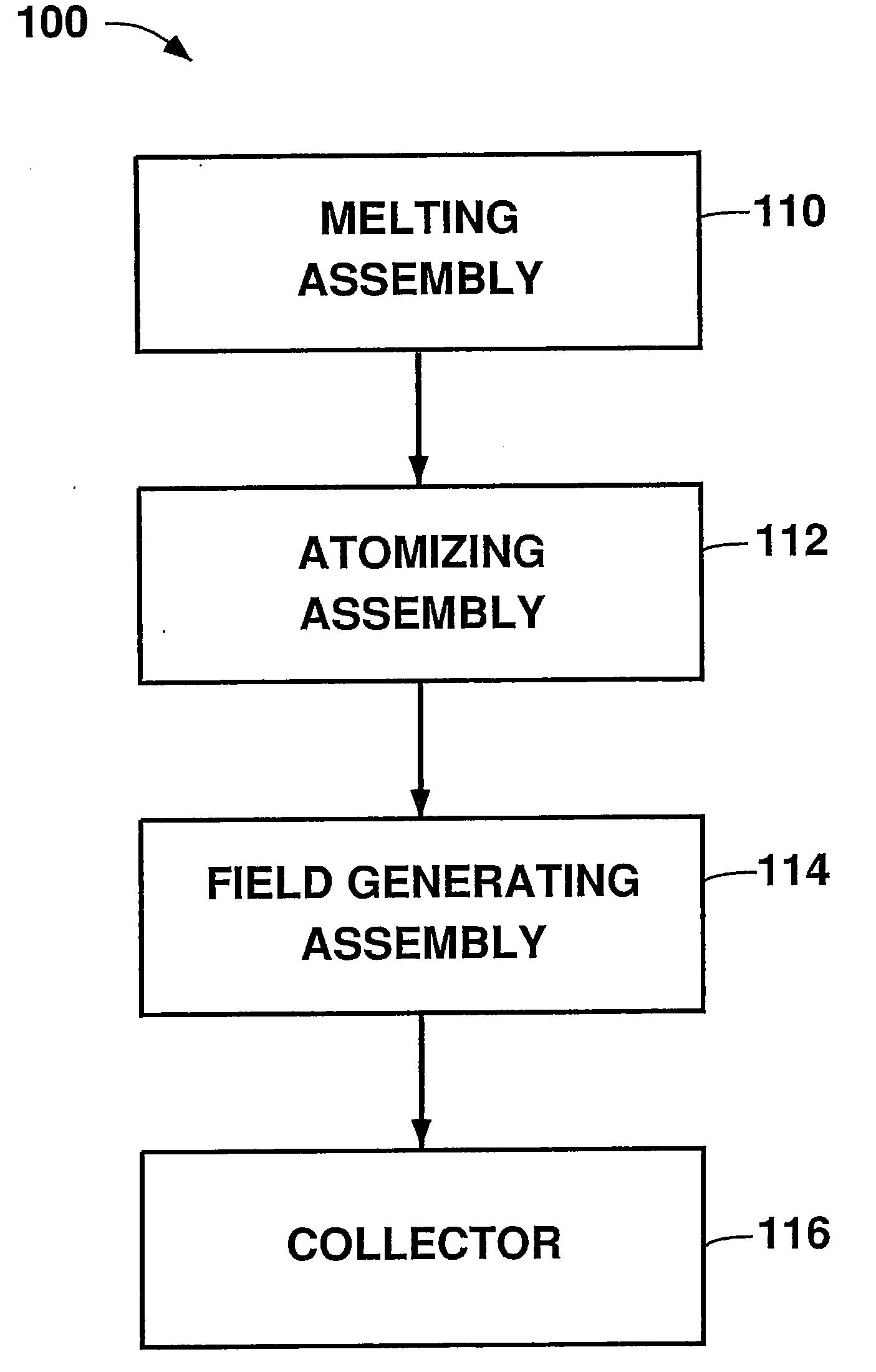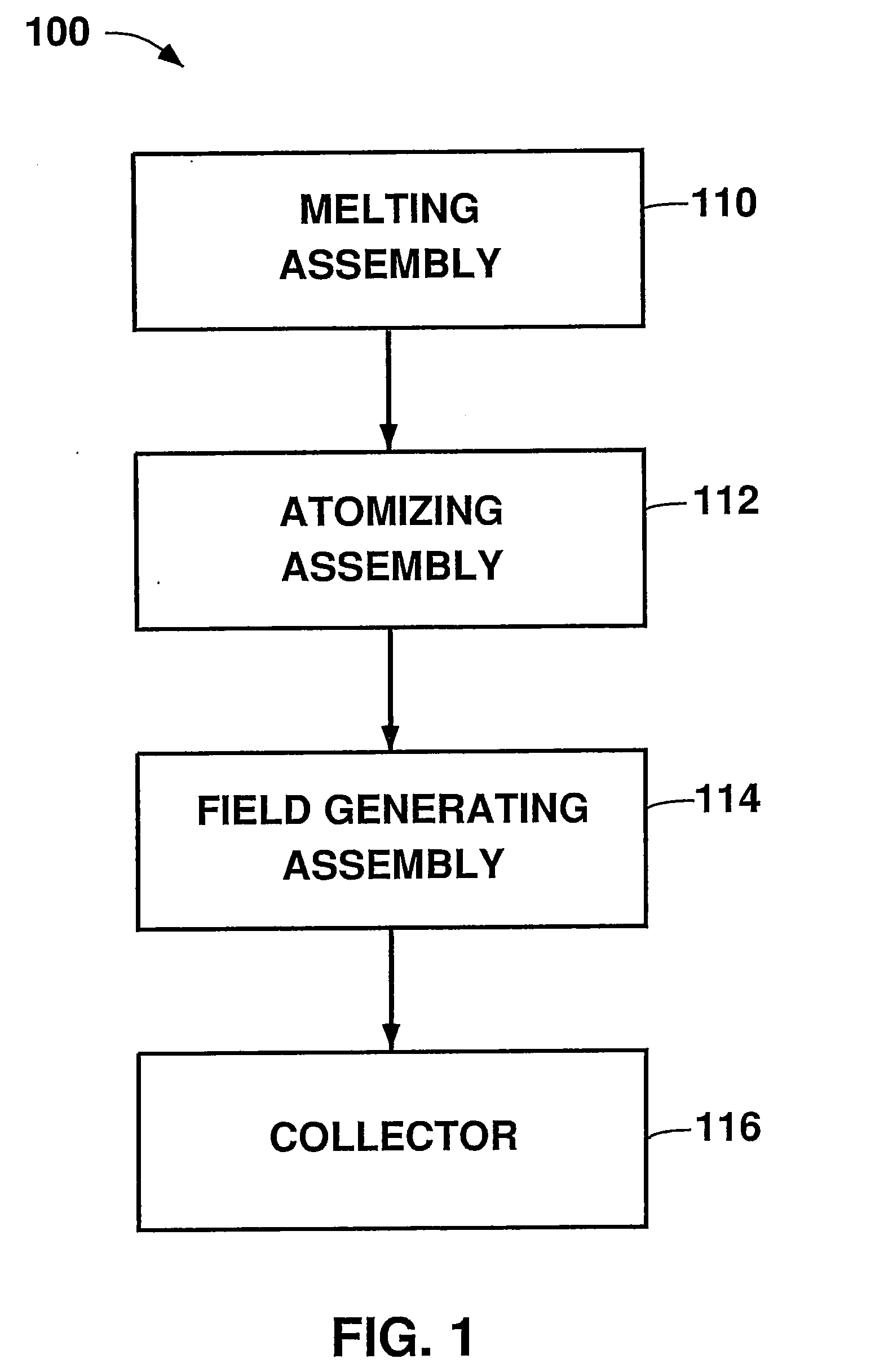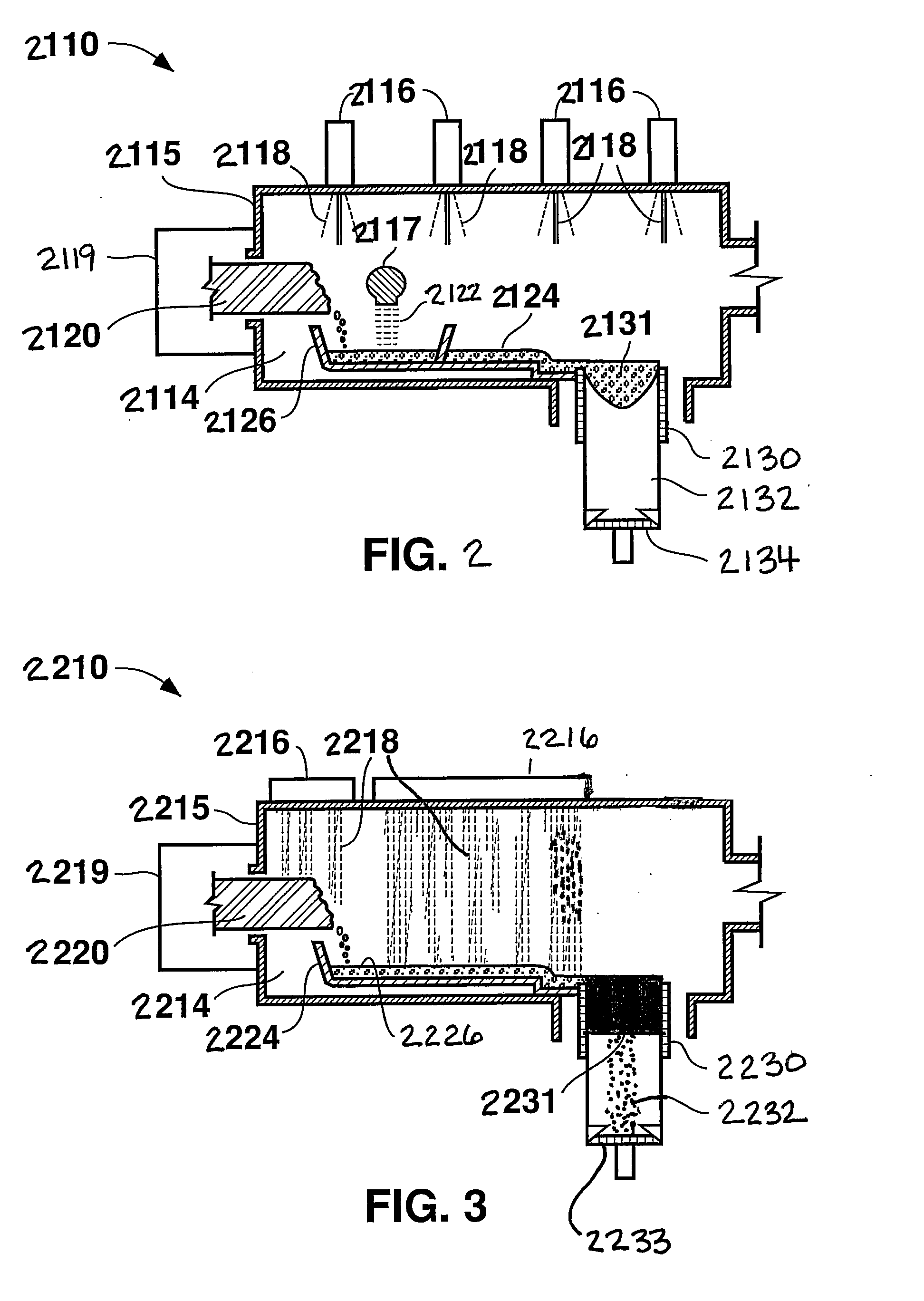Method and apparatus for producing large diameter superalloy ingots
a superalloy and ingot technology, applied in the field of apparatus and methods for melting and atomizing metals and metallics, can solve the problems of ingots that are not suitable for use, ingots that are substantially lacking, and components that are catastrophically damaged
- Summary
- Abstract
- Description
- Claims
- Application Information
AI Technical Summary
Problems solved by technology
Method used
Image
Examples
embodiment 700
[0123]FIG. 15 schematically illustrates certain elements of an additional non-limiting embodiment 700 of an apparatus constructed according to the present disclosure. Melting assembly 710 supplies at least one of a stream and a series of droplets of molten alloy to electron beam atomizing assembly 712, which produces a spray of charged molten alloy particles 714. Electrostatic field 716 is generated by a field generating assembly between the atomizing assembly 712 and a suitably shaped collector. The field 716 interacts with the charged molten alloy particles 714 to accelerate the particles 714 toward the collector. Particles 714 may be accelerated to a greater extent if the collector is held at a high positive potential. The accelerating force and directional control exerted by field 716 on the charged molten particles 714 may be used to enhance the density of the solid ingot 718, and also may be utilized to produce a near-net shape ingot 718. The collector may be stationary, or ma...
embodiment 800
[0125]FIG. 16 schematically illustrates certain elements of yet another non-limiting embodiment 800 of an apparatus constructed according to the present disclosure, adapted for spray forming a preform. Melting assembly 810, which may be substantially free from ceramic in regions contacting the molten material, provides at least one of a flow and a series of droplets of a molten alloy to an electron beam atomizing assembly 812. The melting assembly 810 optionally may be held at a high negative potential, such as by optional power supply 821, so as to negatively “precharge” the molten material before it passes to the atomizing assembly 812, thereby reducing the quantum of negative charge that the atomizing assembly 812 must convey to the molten material to atomize the material. Such “precharging” feature also may be used with the other embodiments described herein as a means to, for example, reduce the required quantum of negative charge that must be added to the molten material to at...
embodiment 900
[0127]FIG. 17 schematically depicts certain elements of an additional non-limiting embodiment 900 of an apparatus according to the present disclosure, adapted for atomizing molten alloys and forming an ingot. Melting assembly 910 provides at least one of a stream and a series of droplets of a molten alloy to an electron beam atomizing assembly 912. Atomizing assembly 912, which is free from ceramic in regions contacting the molten material, produces charged molten alloy particles 914. Electromagnetic field 916 produced by a magnetic coil 918 (shown sectioned) interacts with the charged molten alloy particles 914 to spread out the particles 914 and reduce the probability of their collision, thereby inhibiting formation of larger molten particles. A second electromagnetic field 940 produced by a magnetic coil 943 (shown sectioned) interacts with and directs the cooled particles 942 toward a collector 944 on which an ingot 946 is developing. This portion of the ingot manufacturing proc...
PUM
| Property | Measurement | Unit |
|---|---|---|
| diameter | aaaaa | aaaaa |
| diameter | aaaaa | aaaaa |
| weight | aaaaa | aaaaa |
Abstract
Description
Claims
Application Information
 Login to View More
Login to View More - R&D
- Intellectual Property
- Life Sciences
- Materials
- Tech Scout
- Unparalleled Data Quality
- Higher Quality Content
- 60% Fewer Hallucinations
Browse by: Latest US Patents, China's latest patents, Technical Efficacy Thesaurus, Application Domain, Technology Topic, Popular Technical Reports.
© 2025 PatSnap. All rights reserved.Legal|Privacy policy|Modern Slavery Act Transparency Statement|Sitemap|About US| Contact US: help@patsnap.com



